How about a Free Funnel?
Enter your information below to get access to a free high-converting funnel!

Every day there is one new trend in the online marketing world but there is still one technique that has the highest ROI and the lowest risk.
Do you know what I’m talking about?
I’m talking about email marketing.
Sure, there are a lot of new ways to communicate with your market. But the thing is, email marketing still remains to be one of the biggest and most effective mediums for marketing and sales communications.
However, when it comes to email marketing there are many different providers. Some of them are free and some of them come at a monthly cost.
In the following, I will have a closer look at Actionetics, the autoresponder of ClickFunnels (see here my review of ClickFunnels).
Actionetics is the email marketing automation tool of ClickFunnels that integrates with your sales funnels to give them dynamic automation. Here is a short video of Actionetics:
As you can see, Actionetics is not only able to create and send autoresponder emails but is smart enough to react to the behavior of your traffic.
That means that Actionetics makes it possible to have a seamless connection between your funnels and your email marketing tool.
Imagine not having any technical problems in integrating your 3rd party email marketing tool and trying to build some kind of automation within your funnels. It can be pretty hard to create the perfect workflow for your audience with different tools.
Tasks like these can take a lot of time – time you could invest in optimizing your funnel or other important marketing tasks.
The greatest thing about Actionetics is that it is seamlessly integrated within ClickFunnels.
That means that marketers can get rid of other email marketing tools and simply upgrade their ClickFunnels subscription to use Actionetics and all the great features that come along.
Why is the integration with ClickFunnels so great?
Now you can easily communicate with your audience depending on which step of your funnel they are, what purchases they made or where they come from. That makes it possible to take the communication with your customer to a whole new level.
If you want to use Actionetics you have to upgrade your ClickFunnels subscription to the Full Suite package which costs $297/month. That also comes with Backpack which is ClickFunnels’ very own affiliate marketing management tool.
I think that Actionetics is generally affordable for a premium marketing service. Of course, other email marketing tools like GetResponse or Aweber are much cheaper but they don’t come with the same seamless integration with ClickFunnels.
Actionetics has a very clean and user-friendly User Interface and can be simply used by beginners or advanced marketers.
There are many helpful guides and a great support if you ever have any question or problem with using this tool.
The great thing about Actionetics is the simplicity. You can create complex automations while also being able to learn the system easily and quickly.
What makes Actionectics the best email marketing tool in my eyes is that it not only helps you creating autoresponders and newsletters, but it also lets you integrate with a suite of tools to customize the journey a customer or subscriber takes in your funnel.
What do I mean by that?
Now you can easily make your funnel smart enough to sort people based on their behavior as they go through your funnel.
You have now the ability to analyze your customers based on their social media preferences, their behaviors on your funnel, their purchases, etc that help you to target your marketing campaigns even better.
That means you are able to boost your return on ad spend (ROAS) easily with Actionectics.
Now let’s have a closer look at the features of Actionectics. If you are already familiar with Actionetics this will serve as a refresher.
If you are new to Actionetics or you want to know more about the features before your purchase you are in the right place. So let’s dive in…
At first, we’re going to have a look at the contacts section of Actionetics.
The Contacts Page gives you an overview of all the contacts who have signed up to all your funnels.
I believe the most important information on this page is the brief insight that gives you the number of contacts you have, the new contacts acquired and the number of unsubscribes.
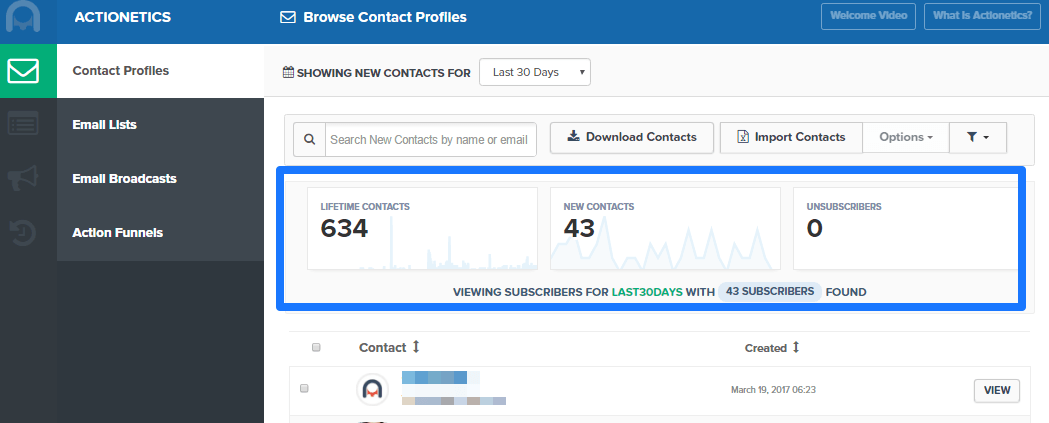
Here you can also import contacts you collected with other email marketing tools or download your contacts if you want to, for example, create a Lookalike audience on Facebook.
You can also customize the viewing options to view other contact information like Action Score, Age, Gender, etc.
You can easily select the boxes of the information you want to have displayed.
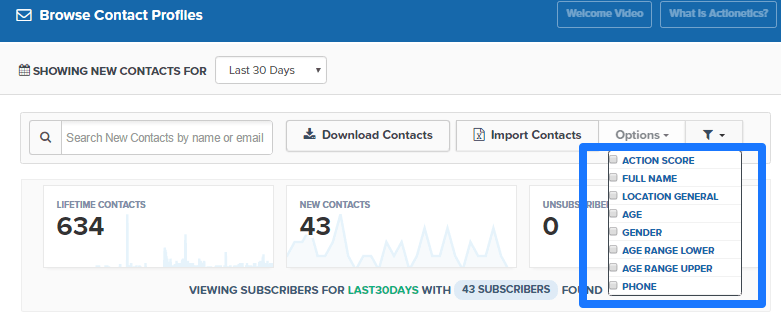
Besides the overview, you can view the profiles of each of your contacts individually. This section shows you all you need to know about your contacts.
In the beginning, I thought that this section is negligible but I was wrong. If you have a closer look at your individual contacts you can learn a lot about your customers and help you create more effective targeted marketing strategies.
In the Contact Profile Dashboard, you get the general information of a particular contact, the business history with your funnels and tags added to their profiles according to their behavior through your funnels.

If you haven’t worked with Tags before you should start right away! Tags enable you to create and send hyper-targeted marketing messages according to a specific behavior in your funnel.
If you don’t know how to add tags for your customers I can recommend this helpful documentation of ClickFunnels.
One of the most obvious things you would notice is the Action Score.
The Action Score is very helpful as it rates a contact’s current value to your business according to recency, frequency, monetary value and social scores.
That means that it allows you to investigate your contact’s online behavior, thereby allowing you to know where to engage, how to engage them and what to do to engage them.
In this section, you can edit your contact’s details such as full name, first name, last name, shipping address, etc.
You can also archive a contact on this page.
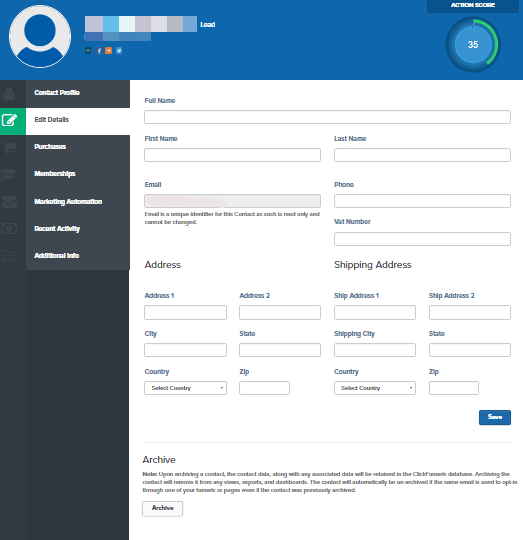
In the purchases section, you can check the contacts’ shopping activities in your funnels for the last 30 days. You can also add products manually to allow your contacts access.
The memberships section gives you information which memberships your contact has signed up to.
In this section, you can see which email lists, broadcasts, and action funnels your contact belongs to.
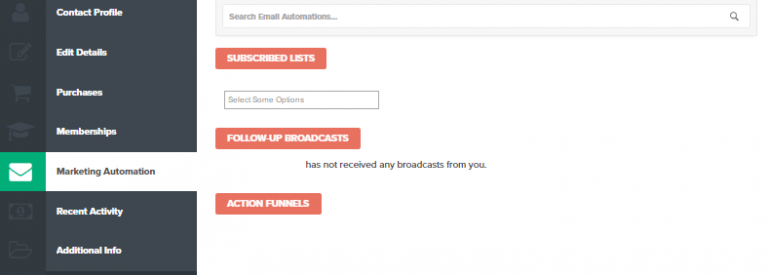
This section gives you information about the date where you contact has visited a particular page of your funnel.
Here you can get additional important information like Utm source, Utm Medium, etc. That is very helpful if you use for example the Google Tag Assistant to easily track the performance of your marketing efforts.
Email Lists is another great feature of Actionetics and helps you segmenting your contacts to whatever list of you have in mind.
This is particularly important if you want to send targeted messages to a set group of people in your contacts.
Be it for marketing, lead nurturing, or whatever email list you want to create depending on the message you want to send.
You are able to build an email list for whichever product/service/campaign you want to. This is very similar compared to other autoresponders.
Creating a new Email list is very simple so let’s have a look at it.
Simply click on Add New List.

Now enter the information, if available. In this case, only the Email List name applies:

In this email list you can now import contacts from a CSV file you can usually create from other email marketing tools.
Besides, you can also download your contacts from a specific list. This can be helpful if you want to duplicate your list or create a lookalike audience on Facebook.
In every email marketing tool, you have the ability to send out regular emails to your contacts. Sometimes this feature is called “send newsletter” and in Actionectics this feature is called Broadcasts.
With Broadcasts you can easily create, send, and schedule when to send an email. As with all features of Actionetics, the user-friendly user interface of the Broadcasts section makes it easy to do your tasks without problems.
The dashboard displays simple metrics like number of emails sent, number of clicks and unsubscribers in a given time (7 days, last 30 days, last 2 months, this year, all-time).

You’ll also get a list of the sent emails, your drafts and it’s where you begin creating email broadcasts to send. All you have to do is to click on the New Email Broadcasts button.
After clicking on this button you will be directed to another page to start creating your email broadcast.
Afterward, you have to choose from the selection of templates:

Filling your email with content is also very easy.
After choosing the template click on Open Email Editor.
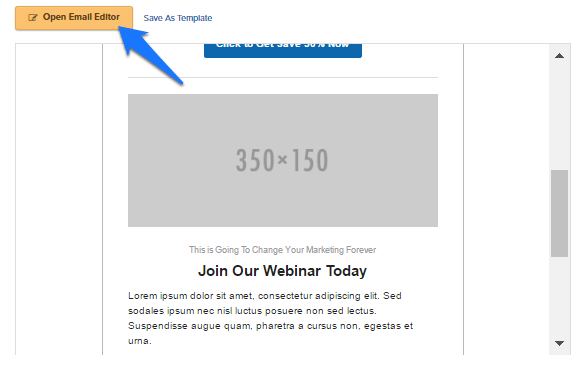
If you are already used to ClickFunnels adding content shouldn’t be too hard. The process is very similar to designing a landing page and I think that is very intuitive so you can easily add, change and delete elements.
Once you’re happy with your result, click Save and Close. That was it. Pretty easy, right? Remember to send yourself a test email to make sure everything looks fine on different devices (mobile, tablet, etc) and your links are working.
If you have any problem with these steps I can recommend to contact the support chat as they always offer a great help for everyone.
I already used different autoresponders and email marketing tools like GetResponse or Aweber but Actionetics is one of the best tools I have worked with. Very intuitive interface and very easy to use. That’s how every tool should be like 🙂
Now we come to the last and most advanced feature of Actionetics which makes it one of the best email marketing tools on the market. This is where most of the automation process is set.
If you want to create an action funnel, all you need to do is to click on Action Funnels on the drop-down menu of Actionetics.

Now click on New Action Funnel.

The next step is to fill out the information on the pop-up box. Here you need to choose a name for the Action Funnel and Email List this action funnel should be assigned to. Click on Create Action Funnel when you are done.
If you have just created your Action Funnel you should have a picture like this:

Now that a new Action Funnel is created, let’s add some steps to the action. To do that, start by clicking on the Add New Step button. The next step is to set the name, the number of days or hours to begin the action and the type of trigger (Send Email, TXT Message, Do Action).
If you are done inserting your information click on Add New Funnel Step.
So for example, let’s choose the Send Email trigger. After clicking on Add New Funnel Step you will be able to create the email you want to send. This process is very similar to creating a broadcast email and I’ll not explain it more in detail.
If you are done change the setting from paused to live.

If you want to create TXT messages as a trigger you will need to integrate your ClickFunnels with Twilio.
If you choose the Do Action trigger you’ll have a different kind of setup. After choosing a name and the Do Action trigger, click on Add New Funnel Step. You’ll be redirected to his page:
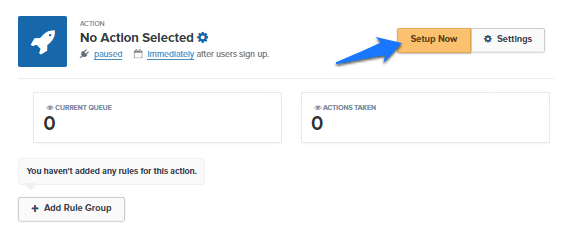
On the pop-up, you can now set up the action. You can change the Action Name which is only for internal purposes. You can also choose the integration, which action to do and which email list this action will be triggered by who.
All these actions can be triggered and filtered according to rule groups.
There are various available combinations for rule groups in Action Funnels, all categorized into seven different groups. You can designate different custom groups for every step in your action funnel.
In a single funnel step, you can create multiple rule groups which make up a Custom Group.
There are seven rule groups available:
The first on the list is the Social rule group. This rule group filters actions according to the number of followers OR following of a contact on a given social media platform.
This Social rule group includes a wide selection of social media platform to choose in filtering who receives an action:
As you can see, that’s a huge list and I believe there isn’t anything big missing.
The next rule group on the list is the Contact rule group. This option filters contacts for specific information in their contact profiles. This information includes:
The Funnel rule group filters who receives an action based on whether a contact has visited a specified funnel (or not).
The Product rule group filters which contacts receive an action based on whether a contact as bought a specified product in the funnel.
The Broadcasts rule group filters who receives an action based on certain actions met concerning email broadcasts.
These actions include:
The rule group Lists filters who receives an action based on the email list the contact belongs to.
The last of the rule groups is the Email Step rule group. This rule group filters whether a contact performs a specific action on an email sequence.
The conditions for this rule include:
The difference between the Broadcast rule and the Email Step rule is that the Broadcast rule is more on a single email broadcast while the Email Step rule concerns more on particular steps of a sequence.
For every action step, you can set as many rule groups as you want to.
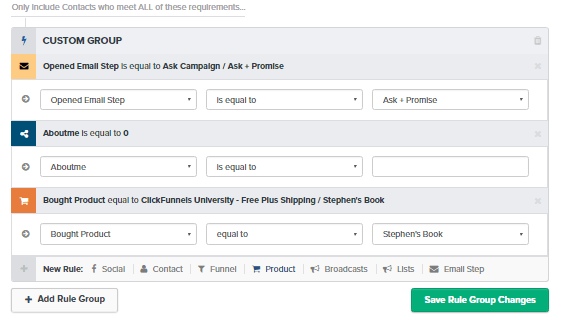
In summary, if you want to create highly effective email marketing campaigns Actionetics is one of the best candidates to do so. The ability of the perfect seamlessly integration with ClickFunnels makes it easy to use for every marketer.
I think that Actionetics has on of the best user-friendly user interfaces of all email marketing tools which makes it very easy and fun to use. You really feel that the developer had the task to make this tool for marketers. After all, it’s why it has been created. To make things easier for us marketer 🙂
In addition, it is fantastic that everything is you need is in one place and you don’t need to connect various platforms for your marketing. I know that everything is possible but sometimes it takes a lot of time to figure out everything on your own.
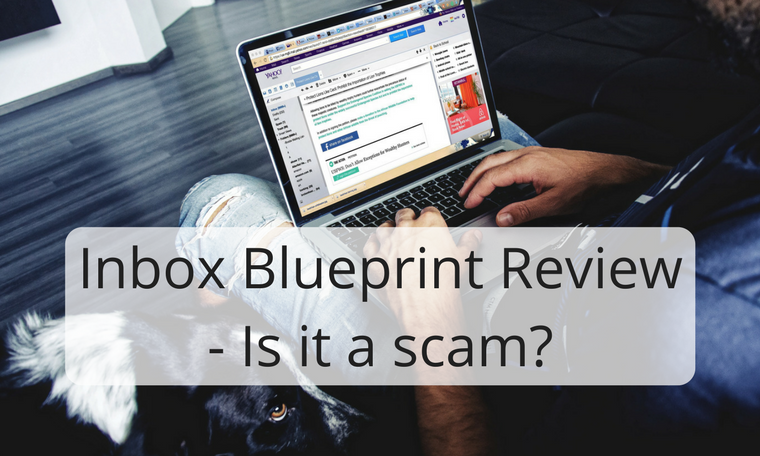
Anik Singal, the creator of the Inbox Blueprint claims that you’ll make over $5,000 in sales within the first 60 days with his product. If not he says that he’ll have a look at your business and see what’s wrong.
But how good it the training and what has Inbox Blueprint to offer?
Inbox Blueprint is a comprehensive email marketing course that teaches people all the parts of an effective email marketing strategy. As you may already know, email marketing should be your #1 focus while building an online business.
Anik Singal, the creator, says that one email subscriber earns you around $1 per month. That means if you have around 1,000 subscribers you are able to earn around $1,000 per month. However, to be able to earn $1 per subscriber you need to know how to build an email list and how to convert people into customers.
Anik Singal is an extremely successful internet entrepreneur who was voted as one of the Top 3 Young Entrepreneurs by Businessweek magazine.
Not only that, his company, Lurn, Inc., earned the prestigious Inc. 500 Fastest Growing Companies in America 2 years in a row.
When it comes to email marketing, Anik Singal is one of the leading experts. With the help of email marketing, Anik was able to sell products worth of several million dollars. So this guy really knows his stuff 🙂
In Inbox Blueprint 2.0 consists of two huge parts. The first part is the training and the second part is the Launchpad. At first, I will have a closer look at the training and afterward, tell you more about Launchpad.
If you join Inbox Blueprint you first need to go through the whole training before you can get access to Launchpad. I think that’s pretty good as you should at first learn the foundation before you can start building your business.
The training is categorized into 9 different training modules:

Each training module has several training videos and the training videos are very good and easy to understand. As you can see, the training is very comprehensive and has a lot of content.
After going through the training you get access to Launchpad – and that’s how it really gets interesting.
If you want to start an email marketing business you need to invest time (or maybe money) to build the different parts of your business. You need to:
As you might guess, this can really take some time. With the help of Launchpad, you can create an email marketing business in less than 20 minutes! (I tried it myself)
Let’s have a look at how simple creating a business with Launchpad can be.
As I already told you, in the inbox blueprint training you already learn how to find a profitable niche. However, you can also use the already researched niches in Launchpad to start your business. Here is a small overview of some of the niches you can choose from:

Now you have to create a new email list with the help of Sendlane. Afterward, you can choose from already prewritten emails how you autoresponder should look like. You can choose between relationship emails and promotional emails.
You can easily edit the emails or use them as they already are.
In this step, you have to choose an affiliate offer for your audience. As you have already picked a niche you get a variety of different affiliate offers from Clickbank in your niche:
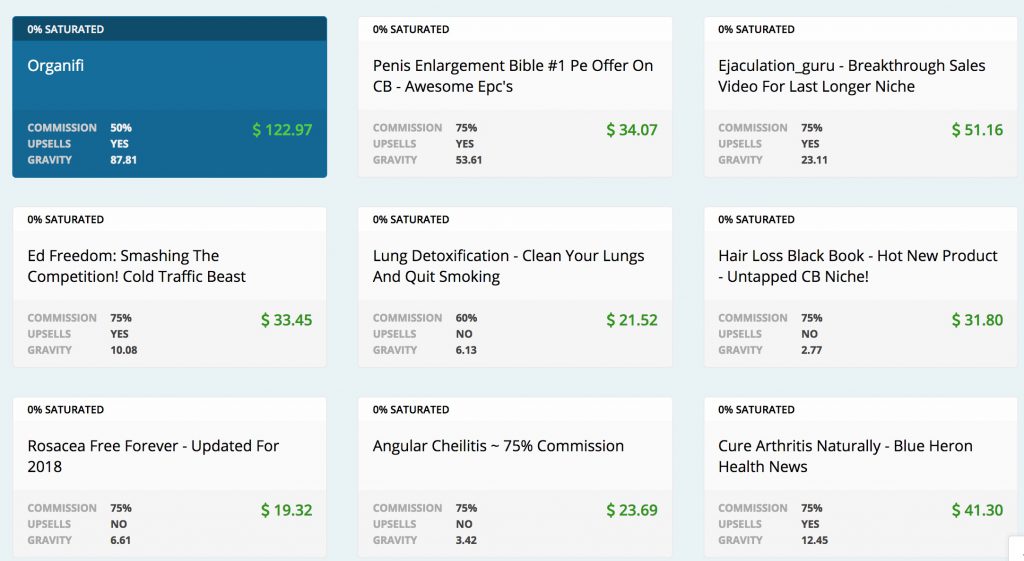
As you can see, you get information about the commission, the gravity and the saturation of the product. However, here you can also put in your own affiliate link. The link will now be inserted in the promotional emails.
This is one of my favorite features of Launchpad. Usually, you have to invest a lot of time (or money) to write a high-quality report you can give your visitors in exchange for their email address.
With Launchpad you have access to thousands of articles you can use to build your free report. So let’s say your niche is online dating. You can now easily search for articles about online dating and pick 5 of them to build your free report.
Afterward, you simply design the cover of your report with a drag and drop editor. I believe that creating a free report has never been easier.
The last step of your email marketing funnel is to create a high-converting landing page. Here Launchpad offers an easy to use landing page creator which helps you build your website within minutes. They offer a variety of different designs but you can easily create your own design if you want to.
After going through all the steps your online business is ready and you can start filling your business with traffic. Yes, it is that easy! In the following video you can see a short demo of Launchpad:
The training of the Inbox Blueprint is very comprehensive and offers a lot of value. However, in my opinion, the training is more to advanced online marketers that already have made their first experiences with email marketing and paid traffic.
The Launchpad works pretty well but I think you need a advanced knowledge to know how to create a high-converting landing page. If you create a landing page you need to know how to create a compelling headline, what kind of report the audience wants, etc.
If you already have some knowledge in PPC and email marketing I believe that Inbox Blueprint is one of the best email marketing courses you can get. If you are a beginner to online marketing I would recommend on checking out Wealthy Affiliate (read here my review).
The Inbox Blueprint comes at a cost of $997 (single payment) or 3 x $397. That includes access to the Inbox Blueprint Training, access to Launchpad, and 12 months unlimited support.
There are also some bonuses you get:
I believe that Inbox Blueprint is worth the money if you invest the time to go through the training and build your business with the help of Launchpad. In addition, the bonuses are very good and help you succeed with email marketing.
Click here to get access to Inbox Blueprint!
Inbox Blueprint is a comprehensive email marketing course for advanced online marketers. I believe that is is one of the best courses you can get about email marketing. Anik Singal is one of the leading experts when it comes to email marketing so he really knows what he is talking about.
Besides the comprehensive training, you get access to Launchpad which makes it very simple to create new businesses very fast.
In conclusion, you can say that Inbox Blueprint is definitely no scam and a ledgit product!
Have you already used Inbox Blueprint? What has been your experience? Let me know by leaving a comment below!

In order to repurpose your content successfully, you need to carefully plan out your content when you first start writing it. If you’re writing a long-form blog post, you might want to break it down into different sections to make the information easily digestible.
You can then repurpose these sections into different formats. It’s easier to do it this way as you don’t need to do too much editing to get your content to fit another format.
Here are the methods you can follow to repurpose content the right way:
Whether your original content is in blog format or in video format, you need to write down how your content is going to flow. You can just wing it, but that means your content may end up a disorganized mess.
By creating an outline, you get to save time by identifying the points you need to cover in your content you’d also spend less time editing and reorganizing your work.
Use headings and sub-headings in your outline. And while you’re writing down the points you want to cover under each heading, also write down your ideas on how you can reuse that particular section somewhere else.
This system is like hitting two birds with one stone – you plan your original content and how you can repurpose it in one sitting.
This point is very important because if you don’t plan ahead who you want to see your repurposed content, then you may not be able to serve up the kind of content these people will engage with.
Knowing your audience is very important for any business to succeed. Repurposing content is no different.
Before you repurpose your content, look around and see what kind of content your target audience usually likes in say, YouTube, Pinterest, Reddit, and more.
If you’re targeting middle-aged women in your niche, then you should create videos with this specific audience in mind. Doing this makes you relatable so even if they’ve never heard of you before or visited your website, your message will resonate with them, and they’ll most likely end up following you.
If you don’t know who your audience is, then you may be hitting blindly in the dark. You could get lucky and find some success, but generally, it’s the well thought out content that is made specifically for a certain group of people that succeeds.
The reason you’re repurposing content is that you want your brand to be seen in a number of different places. How can you achieve this if you fail to use your brand’s logo, colors, or even font faces?
As we’ve covered in previous chapters, branding is important for your business’ success. Branding helps build your credibility and makes you look trustworthy.
It’s important for people to be able to identify your content across many different channels, so do make sure you make it easy for them to do so.
This isn’t a conclusive list by any means, but these formats should give you plenty of head start and allow you expand your reach as quickly as possible. Some may not be a good fit for your niche, so you need to do some research about that.
If you’ve got a series of blog posts or articles on the same topic, then you can easily create an eBook. Don’t just copy and paste the posts. You still need to go through the eBook with a fine-toothed comb to make sure the content flows well.
You can then use this as a lead magnet or content upgrade for your blog. A high-quality eBook can help position you as an authority in your niche and help you get more leads and sales from both old and new subscribers.
The saying a picture paints a thousand words is accurate. An infographic can contain information that may be equivalent to a thousand-word blog post or even 10,000 words.
With infographics, you just need to extract the main points in your content and then transform it into a graphic.
Don’t use too many words in your infographic. Put an emphasis on the graphics part, make it pleasing to the eyes, and upload it to image-oriented sites like Pinterest and Instagram.
Slide decks are quite easy to create on any presentation software like PowerPoint, Keynote or Google Slides. Just like infographics, try not to be too wordy on your slides. Instead, use graphics and icons to emphasize your main points.
This makes your slide decks more easy to understand and will attract more shares than if you just upload a boring text-based slide deck.
If you’ve got great content that can be used in a video, then repurpose it as a video. Tutorials and how-to articles are the best types of content to convert to videos. You can even add your video tutorial to your main content – this is not only great for your website’s SEO, but you’ll get more traffic via your YouTube channel.
Just like with eBooks, if you’ve got a bunch of posts or articles around the same theme, you should also consider creating a roundup post. This not only allows you to build a longer-form article but it also provides you with a linking opportunity to those old posts.
Internal linking is also great for SEO and encourages your audience to visit other pages on your website.
Podcasts are great for people who are always on the go and value their productivity and efficiency. With a podcast, you can just read out your content and record with a good quality microphone. With a bit of editing, you’re done, and you can then upload it to your preferred podcasting platform.
Again, there are many other content types you can repurpose your content to. Check out what your competitors are doing, or you can ask your audience for their input. It wouldn’t hurt to ask them a few questions, and you just might receive some golden nuggets in return!
How do you repurpose your content? What has been the most effective marketing channel for you? Let me know by leaving a comment below!

If you want to build your online business on a solid foundation you should never only depend on a single traffic source. If there is a change in your traffic source your whole business fails. That’s why you should build multiple sources of traffic.
There are free and paid traffic sources. If you want to have more free traffic sources I would suggest these multiple free traffic sources.
There are plenty of reasons why companies – big and small – target social media users. This is because people spend a lot of their time on these sites.
Facebook alone has 2 billion active users every month and thousands more create accounts every single day. Next to SEO, social media marketing is the next best way to drive free traffic to your website.
Sites like these have high domain authority. This is why you’ll notice that there are many posts which appear on the first page Google search results, especially for long tail keywords.
If you want to get a share of the traffic, be helpful and provide thoughtful answers to questions about your niche Don’t leave one-liners. If you want people to upvote your answers, then you need to write detailed and thorough answers as much as possible.
Some people like to spam forums with links to their website. People hate spammers like that!
Once you’ve established yourself as someone who knows what they’re talking about, then slowly ease into promoting yourself or your website. Don’t be too salesy though – like I said people hate that kind of behavior.
YouTube is the second biggest search engine right after Google. And YouTube videos often rank high in Google search results especially for tutorials and how-to queries. If you want your videos to rank, and bring you free traffic to your website, you need to follow a few basic video SEOs.
Don’t spam YouTube with copied and pasted content. Try to be as helpful as possible and offer original content that will help you win over your viewers.
To succeed in podcasting, you need to provide valuable content to your listeners. Having a great voice is a plus, but ultimately it’s going to be your content that really matters. You can also try and reach out to other podcasters and interview them on your podcast to try and extend your reach.
Don’t just say adios at the end of your podcast – make sure you include a call to action!
Guest posting is a great way to introduce yourself to other people’s audiences. If you write a super valuable post and that site’s followers love your content, then chances are they’re going to want to follow you.
This not only brings you an additional stream of free traffic, you also normally get a free backlink back to your website. If your guest post lives on a high domain authority site, then that backlink can do wonders for your website’s SEO!
If you’ve already got an email list, don’t forget about them. If you’re taking a lot of time promoting your brand on other people’s websites to get in front of new audiences, then you should all the more prioritize the people who already trust you.
Don’t spam them with offers. Instead, continue giving them valuable content, so they don’t hit that unsubscribe or worse, that spam button.
If you’ve repurposed your content into slide decks, then you can upload it to sites like SlideShare. You’ll get traffic from people who search for content like yours on those sites, plus you’ll even get a free backlink. Again, this is great for your website’s SEO.
Who doesn’t love photos especially high-quality ones? If you want to endear yourself to your followers, then regularly upload photos relevant to your brand or business.
Depending on your niche and the nature of your evergreen product, it is very much possible to drive traffic from Instagram to your website. You just need to make your images appealing and highly relevant to your target audience.
Some people say blog commenting is dead. If you spam blogs, then yes, it’s true. If you leave thoughtful comments that actually add value to the original post, then people are going to be curious about you.
Additionally, it may get you in good graces with the blog owner, and you can start building a relationship with them.
People love freebies and discounts. If they think they’re getting a good deal over a product they really want, then they’re going to bite whatever it is you’re offering. You can promote your offers and codes on your own website, or you can post it on your social media channels.
If you do it right, you can soon expect people to visit your website to take advantage of your offer!
There are plenty of different ways to generate free traffic. The common method to get good quality free traffic is by offering people plenty of value. There are plenty of platforms to choose from, and you don’t always have to do what everyone is doing.
You can think outside the box to come up with creative ways to encourage people to visit your website. When you find a free traffic source that not many people know about, then you’ll feel like you’ve won the jackpot!
If you want to learn everything about SEO I can recommend the Wealthy Affiliate University (Read here my review).
What traffic sources are you using the most? What do you think is the most effective method? Let me know by using a comment below!

There are plenty of ways to build your brand. Before you can do this, first, you need to find out what the Internet already knows about you.
Do a Google search for your name or business. If you’re marketing using your own name, type your name both with and without quotes on a private or incognito browser window, so your search results aren’t skewed. If you’re marketing using your business name, do the same method.
Does it show you in a positive light? Or do you have an angry client or customer up on the first page of Google?
If you don’t have any negative comments come up, then that’s a great sign! You can continue to build your brand on such a positive result. On the other hand, if you’ve got some negative comments, do your best to answer professionally to put yourself in a more positive light.
Your competitors may have hired people to do a smear job on you to ruin your reputation and scare your customers away from you. Not many people do that, fortunately, but it does happen. You better make sure all your feedback – positive and negative – are all genuine.
When you deliver personalized service to your customers, people will appreciate you. Too many businesses are only out to get their customers’ money, they don’t really care about them at all.
Another way to create an unforgettable experience for your customers is by engaging with them directly. By treating them as people, you’re erasing barriers. You’re positioning yourself as someone they can communicate with directly.
This is why even big Fortune 500 companies have people manning their social media channels so when customers bring something to their attention, they’re able to respond to it quickly and publicly.
Putting on a face to your company brings you closer to your customers – and they’ll pay you back with loyalty.
When you make an impact on your customers’ minds, they’ll remember you and your actions during those times you engaged with them. They may not remember what they bought from you, but they’ll remember your actions and the feelings that your actions evoked.
Humans crave relationships, that’s a fact. When you build a relationship with your customers, you’re literally telling them they can count on you. Don’t take their trust lightly because the moment you do that, you’ll lose that trust.
Once that’s lost, it’s going to be hard to win it back. More often than not, they’ll transfer their trust to your competitors and maybe even convince a number of your customers to go over to the other side, too.
When you build a relationship with your customers, you need to put a lot of effort into making it work. Depending on the nature of your business, you can maybe mail them gifts during special times of the year, offer them a discount code or a free month of your service.
In short, make them feel special. That’s how relationships work– you make the other person feel special.
Another aspect of building a relationship with your customers is that you can also build a community or a group of them.
Inviting them to join your community may make them feel special. They’ll meet new friends, and they’ll get to interact even more with your business.
Connecting with your customers is very important. Hiding behind a fake name or profile is going to be detrimental to your success. You can connect all you want with your customers on social media or on your website, but once word gets out that you’re a flake, then you’ll lose face.
You’ll lose your credibility, and your reputation may vanish overnight. You’ll lose all the customers you’ve worked so hard to build a relationship with.
Being authentic is one important aspect of building your brand’s foundation. If you build a brand on a fake persona, it’s going to be hard to grow your business.
Yes, you may find some success, but your growth will be limited. There’s always going to be that boundary you can’t cross. Otherwise, people will know you’re not real, and then you’ll lose your brand.
Be visible in places where your customers hang out. If you’ve got plenty of customers on Facebook, Twitter, Instagram, Snapchat, or any other social media channel your audience frequents, then don’t be afraid to reach out to them.
Show them you’re active on their favorite platforms and engage with them. Give them plenty of value for free without asking for anything in return. In their mind, you’re an authority figure or a thought leader. They’ll trust what you say.
If you’re honest and consistent, people will notice. You’ve got proof to show them.
This is why following through is very important. If you don’t follow through, you’re making empty promises, and soon, people will lose their trust in you. Your word won’t mean anything, and you’ll lose your audience.
Controlling what other people see about your brand is not always easy, especially if you’ve been around for a few years and you’ve never paid attention to what people are saying about you on the Internet.
You can use social media to interact with your customers and your clients. At the end of the day, you don’t own that platform. You can have all your testimonials on social media, but what if that platform disappears?
Simply put, the best platform to control your brand’s reputation is by building your own website. And by your own website, I don’t mean getting a free website from a blogging platform. You need your own website with your own domain name which should preferably be your brand name.
It will help if you’ve got a memorable or brandable domain name too, so it’s easier for people to search for you on Google. Getting a domain name and web hosting is very cheap nowadays, and it’s one of the best investments you can make for your business.
With your own website, you can control the information you want to share with the world. If you’ve got positive testimonials from social media, you can post screenshots on your website. If you’ve got a portfolio on other platforms, bring them over to your website.
Create a forum on your website for your loyal followers or place a link to other channels where they can engage with you. It allows them to see your diversified presence on the Internet and if they’re on those other platforms as well, then they ‘d also follow you there.
It also makes it easier for potential customers to find you when you are referred to them by their friends.
Creating a personal or business brand that people will trust will take a lot of work and a lot of time. The tips I’ve shared in this article will not only point you in the right direction but will also help you build your brand much faster.
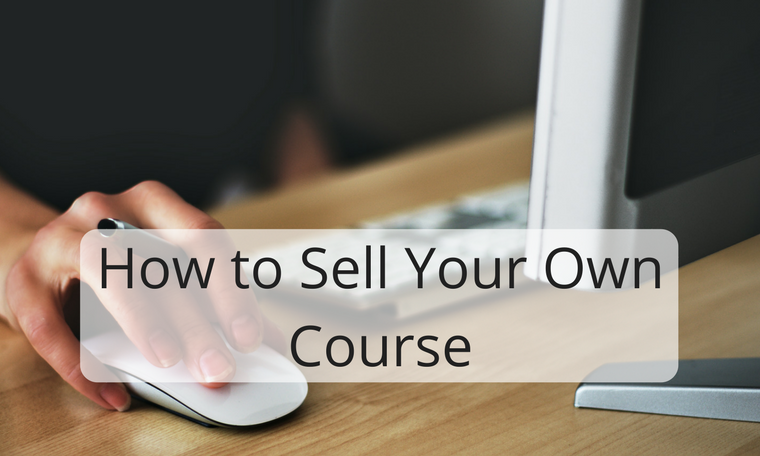
Before you start creating your online course, it’s important to put yourself in your students’ shoes. Would they find your course valuable? Would they learn something new and actionable from you?
Do you care about their learning experience or are you only out to line your pockets with their money?
Always remember that if you want evergreen Internet profits, you need to provide as much value as possible to your audience. If you fail to do this and only think about yourself, then your business is not going to last.
Helping people should be your top priority whether you create a video course, a text-based course, an audio course, etc.
Here’s a step by step guide to help you start creating your first course:
While you can choose to create a course on any subject you want, you want to make sure you’ll actually have enough people interested in your topic.
Helping people is important, but since you’re building a business, you should also want to see a return on your investment and generate a healthy profit.
There are quite a few ways to find a profitable topic:
I mentioned ‘evergreen’ because you want to create a passive income stream? If you choose a non-evergreen niche like technology, then your course will become obsolete as soon as that technology becomes outdated.
With evergreen niches, you don’t need to worry about all that. Your course could still be selling decades after you launched it!
This step is very important if you want to avoid wasting your time and money on building a course no one will buy. You can ask the opinion of your family and friends, but they ‘d probably be biased and tell you what you want to hear– that your course is great and it’s going to sell like hotcakes.
If you want to get real world feedback from people you’re interested in selling your course to, then you can try creating a survey and have your target audience answer it.
How?
If you’ve got an email list, you can simply ask them to answer your quick survey. If you don’t have a list, then you need to get creative.
You can maybe create a mini-course on the subject you want to sell and use it as an email opt-in. Drive traffic to your mini-course.
Track how many people visited your site and compare it to the number of people who actually signed up.
If you get a nice conversion rate, then it means your course can be profitable. If you get very low sign up rates, then maybe your idea isn’t very sellable.
Try split testing so you can make an informed decision on whether to continue with your course or just totally forget about it.
At this point, you should already know your course has an audience waiting to be sold to. The next step you need to do is plan out how you’re going to structure your course.
Creating a detailed outline is very important as you can clearly see which areas you need to cover. Cover the main points in your course– no need to go crazy on the details.
The important thing is you need to get your audience’s problem solved, and you need to make sure your course answers that problem thoroughly.
Break your course into small “bite-sized” sections. Your audience will appreciate you taking the time to make things easy enough for them to understand.
Once you’ve finished the outline, take a moment to review it. Ask yourself if you left anything out and if you think it’s got all the details to help your intended audience. Only then should you start working on the content.
Don’t get too hung up on getting the perfect eBook cover, or the perfect lighting for your videos, or how you’re going to sound in your audio recording.
Some successful entrepreneurs’ first-ever courses were shot on their smartphone or their laptop’s webcam! Whatever content type you choose to go with, your students are going to pay you for your content and your knowledge.
Now that you’ve successfully created a great course, it’s time to upload it online so you can start selling it.
There are generally 3 types of places where you can sell your course:
Having your own course on your own web property gives you the most control over your product. You can choose your own design and set your own price. You don’t have to give anyone a share of your profits, you get to keep everything!
If you use WordPress, you can simply use a plugin to manage your course and your payments, and you can be in business in a matter of hours! If you use WordPress I can suggest using ClickFunnels as you can simply integrate your sales funnel within WordPress. (See here my review)
If you don’t have your own website, or you don’t want to be bothered with setting it up on your own, you can simply host your course on a third-party platform.
These platforms make it easy for you to upload and manage your course, but they do come at a price. Some require a monthly or annual subscription while some require a certain percentage of your sales.
If you don’t have a website yet I can also recommend ClickFunnels as they can also host your landing pages and sales pages.
Sites like these have become popular in recent years. If you want to get your course in front of millions of people, then this is the best place for your course. The downside is that you have very little control over your course once you upload it.
Most platforms also place a limit on course prices, and they even take a cut of your earnings so be sure to keep this information in mind. One example of an online learning marketplace is Udemy which offers all the tools you need to upload your course.
In addition, Udemy is a very trusted source which can help you generate sales.
Since you’ve already identified your audience before you even started creating your course, it’s now time to let them know about your course and how it can help solve their pain point!
If you’ve got an email list like I discussed in Step 2, then you have to email them now. Let them know how they can benefit from your course and guide them to where they can buy it.
Make them feel special, offer them something nice as an existing subscriber – maybe a discount code or a free preview.
You can also use free and paid methods to drive traffic to your course. There are many ways you can generate traffic but make sure you target the right audience, so you get good conversion rates.
Use proven marketing strategies to encourage your target audience to buy your course. Know how a sales funnel works so you can entice your leads or prospects to become paying customers.
If you have no idea what sales funnels are and how they can help your business I can recommend reading the book DotCom Secrets by Russell Brunson. (Read here my review) In addition, I can recommend the second book of Russell Brunson Expert Secrets which helps you define your message and sell your course (My review).
And remember to ask them to opt-in to your email list so you can contact them again later on.
An evergreen course is one of the best ways to generate passive income. While you do need to put in a LOT of work to make your course awesome, you just need to remember the fact that you only need to do the hard work once.
You can create a course in less than a week and have it generate sales for many years to come. Imagine if you are selling several evergreen courses – you can live the life you’ve always dreamed of and spend your time doing what you love the most!
Have you already made some experiences with selling a course online? Let me know by leaving a comment below!

In the online marketing world, you will often read or hear these words, “content is king.” This is why many businesses have started to employ content marketing strategies by putting up blogs on their sites and posting their content in many different places.
Publishing valuable content that actually helps people is not only good for your brand’s SEO, but it also encourages engagement with your audience. It also sets you up as an authority or thought leader in your niche, which in turn leads to new sales for your business.
However, to create great content you should put in these 5 ingredients to make your content to truly stick!
Google hates duplicate content. Don’t just copy and paste other people’s content because it can get you in a lot of trouble.
Don’t even think of using robots or content spinners to create spun content. This just results in more garbage content on the Internet.
If you truly want your content to be great, then you need to create original content. And by original, I don’t mean rehashing. If you want to establish yourself as an authority in your niche, then you need to take the time to write something that not many other people know.
Or if you don’t have the expertise, then you can outsource it to someone who actually knows the subject.
The point is that people, and search engines, will reward you in the long run for taking the time to make original content.
Because there’s no call to action or the content itself wasn’t actionable at all. What you just read doesn’t tell you what you’re supposed to do so it leaves you confused.
If you want people to recognize your content as being great, then you’re going to have to give out actionable advice or tips in your content.
You don’t have to give them a step-by-step breakdown, but your content should at least make it easy to identify what your audience needs to do to apply the information you’re giving them.
The headline is the first thing people see when they come upon your content. They’re not going to jump into the body, no. They’re going to read what your headline is all about and only then will they decide if they want to continue reading.
In essence, a great headline is what makes your reader want to continue. If you wrote a generic and boring headline, your readers might not want to go far enough to read the first paragraph. They ‘d just close the browser tab and move on to the next website.
People will check out your content if they think you can help them. If you’re offering the solution to a problem or you have the answer to their questions, then they’re going to check out your content.
Nowadays, people don’t just want answers.
They want answers fast. They want answers immediately.
Even if you do have the answers to their questions, if they can’t find it quickly, they’re going to leave and look somewhere else. Make sure you structure your content in such a way that your audience can immediately see what they came to find.
This is an important ingredient for making great content. Of all, you need to know who your audience is so you know the kind of language they use, their slangs and terminology.
If your content is geared primarily towards millennials, then use their language. Don’t use difficult words that are more fit for people in the academe.
By using their language, you’re making your content relatable. You’re making it easy for people to trust you and they ‘d easily welcome you into their community because you belong. Your language will tell them that you’re one of them.
As you can see, it is not that complicated to create great content if you put in these 5 ingredients. Do you think there is some ingredient missing? Then let me know by writing a comment below!

If there’s a business model entrepreneurs should strive to succeed in, it should be those that generate passive income.
Why? Because with a passive income you’re literally earning money with minimal to no effort on your part.
Sounds like a dream?
Yes, it’s quite the dream life when you get to that point. Obviously getting there is not easy. Otherwise, everyone will be living off of their passive incomes and traveling around the world!
How do you find the perfect business that will generate passive income for you?
If this is something you’ve been meaning to ask, then you’re in luck because, in this short report, you’re going to learn 5 of the best passive income businesses you can start today!
Affiliate marketing is often one of the first methods newbies try out when they first get involved in Internet marketing. The idea behind this business model is very simple and is a proven profitable method. You simply need to promote other people’s products as an affiliate, and you get a commission every time someone buys those products through your affiliate link!
Commissions vary wildly. In some places like JVZoo and Clickbank, you can get commissions as high as 90% or even 100%! If you’re an Amazon affiliate, the maximum commission you ‘d get would be 10%, but the good thing is you get a commission for all items bought on Amazon (not just the ones you’re promoting on your website).
The key to getting good income with affiliate marketing is by sending plenty of traffic to your website. It’s a numbers game basically so you ‘d need to look for where your target audience is hanging out and promote your affiliate products to them.
One great advantage of affiliate marketing is that it’s relatively easy to setup. You can promote products anywhere you want– on your blog, on your guest posts, on forums, on social media, on your emails, and many more places!
All you have to do is just sign up to be an affiliate of a product you like, and then use that special link and promote it. Of course, not all affiliate networks and product owners are going to approve your request.
Most of them will ask for your website address and ask you questions on where you plan on promoting their products. If they don’t like your answers, then you don’t get approved as an affiliate.
Product vendors require you at least have some solid online presence before they approve your request.
Product vendors do get scammed too, so they tend to be pretty careful when it comes to approving affiliates.
If you find it difficult getting approved on a network, it’s best to establish your online presence first by building your own website or blog and letting it age for a few months before re-submitting your application.
When your application gets approved, and you create valuable content around the affiliate product, then you can pretty much get passive affiliate marketing income for as long as the affiliate product is available.
If you want to learn more about Affiliate Marketing I would recommend to check out Wealthy Affiliate. Read here my review.
If you are an expert in a particular subject, and you want to share your expertise with the world, then you may want to create your own course and info products. If you don’t have specialized knowledge in anything, don’t fret.
It’s not the end of the world. You can still sell eCourses and info products even if you don’t have the first-hand experience in any subject!
You’ve got two options basically.
There are plenty of freelancer-for-hire platforms. You can go through any of them and place an advert for a qualified freelancer to come help you out with your project.
The great thing about selling your own course and info products is that you can set your own price. Unlike affiliate marketing where your commissions are capped at a certain percentage, selling your own products allows you to put your own price tag! If you think your course is worth $197, then set that price.
For best results, however, you should, of course, do your own research to find the best price for the product you’re offering. Look at what similar products in the same niche are priced at.
To boost sales, you may want to consider creating an affiliate program so other people can help promote your product. If you offer your affiliates a good share of the profits, you ‘d have plenty of applicants knocking at your virtual door.
While you may think it’s not such a good idea to share your hard-earned profits with other people, just think of it as hiring salespeople to promote your product for you. You do still get to keep a certain amount for every sale your affiliates make, so it’s still a win-win situation for everyone!
eCommerce has been all the rage these days. Probably the most popular eCommerce stores you see are those businesses that promote their products on Facebook and Instagram! You’ll see plenty of these businesses advertising their wares and services on your newsfeed.
With eCommerce, you can basically sell anything you want. You can sell your own products and services, you can sell affiliate products, you can do dropshipping, and so much more. Your options include selling things from your own website or using a third party platform like ClickFunnels to simplify the business side of things.
You can have a brick and mortar shop, but also sell your products on your own website, or even list it on eBay and Craigslist. The possibilities for eCommerce are nearly endless.
A great advantage of eCommerce is that your business is open 24/7 and you can sell to anyone in the world, if you so choose.
If you’re selling physical products, you ‘d have to factor in shipping costs and delivery times to your price. For digital products, eCommerce provides a platform where vendors get paid instantly, and buyers get access to their purchase in mere seconds.
eCommerce businesses are also much easier to scale than brick and mortar businesses. With eCommerce, you can simply add your products to another platform or duplicate your current website, and you ‘d have a new income stream on your hands.
While eCommerce is a great source of online revenue, not all eCommerce businesses provide passive income. For most stores you ‘d need someone to handle the orders, ship products (if you’re not dropshipping), provide customer support, and so much more.
Once you reach a certain level of success, you can pretty much build a team to work on your business and just manage it from afar!
You can train your staff to handle all aspects of your business– from sourcing products to fulfillment to customer service– everything really. If you take good care of your employees, they’ll take good care of your business. Once your team gets the hang of your business, they’ll work like a well-oiled machine providing you with a hands-free passive income stream!
For this type of business model, you can literally earn passive income from any type of service. This means you ‘d only need to find clients, customers or buyers, and you let someone else do the job for you. While this may not sound like a passive business model, hear me out.
If you have an agency selling writing or designing services, you can set up a website with your portfolio on it and promote it to the world. When people buy your services, you hire out the work to a freelancer.
You can sign up on freelancer marketplaces, bid on jobs, and when you win a project, you hire another freelancer to do the work for you at a much cheaper rate.
Do you see the possibilities? You can have any number of clients and not worry about not fulfilling any of the work because all you do is just hire someone else to do the actual job. You simply pocket the difference between the amount your client pays you and the amount you pay your contractor!
To ensure the quality of work doesn’t suffer, you ‘d need to vet your freelancers thoroughly. Doing this may take time. While a lot of freelancers, especially those based overseas, can afford to work on peanuts, the quality may not be up to par.
You ‘d have to go through a lot of profiles and applicants before you find a keeper. When you do find a qualified freelancer whose rates you can afford (and still earn some profits), then consider yourself in business.
To make the most amount of profits, you ‘d have to win plenty of projects and have a good number of freelancers on your team. Now the thing with freelancers is they quite literally have the freedom to work with other clients.
If you want to book blocks of their time, say 40 hours a week, then you ‘d have to hire them as regular employees, and not as contractors. A different set of rules would apply in terms of pay and benefits, but for the most part, the business model will still provide you with a good stream of regular passive income.
SaaS, or software as a service, has been gaining popularity in recent years. You basically create a software, or have it developed for you if you’re not a coder, and sell subscription to people. There are plenty of apps nowadays that have been created on the Saas model.
Popular examples include Microsoft Office 365, Salesforce, Google Apps, Dropbox, and Slack.
To develop a SaaS business, you need to have a good and profitable idea. You ‘d basically need to have a solid business plan in place because winging a SaaS project is going to be very costly.
If you decide to just hire a developer without making sure your idea is going to even work at all, or if there’s a market for it, then you could end up losing thousands of dollars in developer fees! If that’s something you can afford to lose, then by all means, go ahead and develop your software. For more prudent entrepreneurs, a business plan is obviously the best option.
With a business plan, you will be able to define and clearly see what makes your software stand out from your competitors. Tests are going to be necessary, so you ‘d need to take this into consideration.
Once you find a winning idea, you ‘d need to find the best developers who will share your vision and your passion for your software. You ‘d also need to have a marketing team in place to help you market your product to your target audience.
Because you ‘d need to spend a considerable sum of money before your product even gets launched! And once it’s launched, you ‘d need to spend even more money to market it in front of the right people!
The good thing is once you start seeing some profits, your Saas business will be pretty much on autopilot, and you can expect to see those dollars trickling in your bank account regularly.
As you can see there are many ways to build a business and create a passive income. It was never easier to build an online business and to generate a passive income which lets you live a life you freedom.
Have you already built a business? What kind of business? Let me know by leaving a comment below!

If you search the internet for training programs that help you earning money online with affiliate programs you usually come see two programs very often. That is Affilorama (see here my review) and Wealthy Affiliate (see here my review).
But which program is better and is the number one training program for affiliate marketing?
In the following, I will compare the two programs as good as possible.
Both training programs come with a free membership which is very good to test them and to see whether they are worth the money or not.
Here I think Wealthy Affiliate has a small advantage as you get 2 free websites and 10 step-by-step training sessions. That makes it very easy to get the first steps done in the online marketing world. In addition, you can connect to all the members of Wealthy Affiliate and get to know some new people.
In Affilorama you get also free training but it’s “only” informational content and you don’t get any steps or assignments. Also, there isn’t a community as there is in Wealthy Affiliate.
If you join Wealthy Affiliate you get the first 7 days a discount for the first month and you pay instead of $49 only $19.
After joining Affilorama you get the chance to get the first premium month for only $1. However, this is only a one time offer.
As I already told you, both training programs offer a premium membership. In the following, I will compare the features of both premium memberships.
As I already mentioned the premium membership costs $19 the first month and $49 every month afterward. You can also upgrade to a yearly membership which costs $359 per year.
The Affilorama Premium Membership comes at a cost of $67 per month which means that Wealthy Affiliate is cheaper.
In Wealthy Affiliate, you get access to over 5 levels of certification and each level has 10 training lessons with training videos and step-by-step assignments.
The training is very good and very easy to follow. There are also weekly live classes which cover the newest trends in online marketing. Also, the members of Wealthy Affiliate are able to create training themselves so there is new training coming in each month.
The training is mainly focused on SEO which isn’t bad but I believe that SEO should be used to build an email list.
With the Affilorama Premium Membership there comes +100 new training videos on the topics of SEO, PPC and Email marketing. However, these are good training videos but there aren’t any step-by-step assignments or tasks.
However, there is also training about how to create and sell a product which is very good easy to follow. Some of the training is outdated and can harm your rankings but these lessons are marked.
What I liked more about the training of Affilorama is that it is not only focused on SEO. There is also PPC and email marketing training within Wealthy Affiliate but the main focus is SEO.
In conclusion, I think, that the Wealthy Affiliate membership training is better and more easy to follow.
In this context, I have to mention that there also the possibility to get step-by-step training of Affilorama by buying the Affilorama Blueprint for $197.
In Wealthy Affiliate, you get access to the tools you need to build your online business which includes hosting for up to 25 websites and a keyword tool. The keyword tool is easy to use but very basic.
Affilorama is able to host 15 websites for you. You also get access to the “beta” version of AffiloTools which is a very good tool for SEO. That tool makes it easy to follow your rankings in SEO and your sales within ClickBank.
One of the greatest things about Wealthy Affiliate is the community. If you ever have any problem or question there is always someone who can help you. In addition, you can also directly contact the founders of Wealthy Affiliate if you have any problem.
In Affilorama, you get access to the member forum but that is not as active as the community compared to Wealthy Affiliate. In addition, you can only contact the support of the founder and not the founder himself.
I believe that is also a big advantage for Wealthy Affiliate.
As you can see, I believe that the Wealthy Affiliate premium membership is slightly better than the Affilorama Membership. The big advantage of the Wealthy Affiliate membership is the step-by-step training and the community.
However, the advantage of Affilorama is that it doesn’t only focus on SEO.
Also, one big advantage of Wealthy Affiliate is that there aren’t any further upsells. There is only the premium membership and no further high-end products. In Affilorama there is the premium membership, the Affilorama Blueprint ($197), the Affilorama JetPack ($747), and Affilorama themes ($97).
That shouldn’t mean that any products of Affilorama aren’t worth the money. But within Affilorama you can spend much more money than you could be using Wealthy Affiliate.
If you want to test Wealthy Affiliate you can create a free account here. If you want to try the Affilorama free membership you can create a free account here.

If you want to build a skyscaper you need a solid foundation. Otherwise your skyscraper will crash to the ground one day if you haven’t put enough effort in building your foundation.
But how does the foundation of a successful business look like? Check out these points to build your foundation!
Identifying your business goals right off the bat is important. I know making a profit is the ultimate goal but don’t stop at money.
Your ultimate goal should be to help other people. As the great salesman Zig Ziglar famously said, “You will get all you want in life if you help enough other people get what they want.”
If you’re only doing your business for money, then people are going to know about it soon enough. They’re going to stop buying from you, and they’re going to tell their friends to stay away from you. Greed is not going to get you very far in life.
Look at what happens to so-called gurus– they ‘d be profitable for a few months but once word gets out that they’re not really in the business of helping, then these gurus disappear.
If you follow Mr. Ziglar’s advice, and do your best to help people, then you’ll have more money than you know what to do with!
If you want to create evergreen products, make sure that those products are actually helping people solve their problems. Don’t sell for the sake of selling. If you focus on helping people, then you’ll have loyal customers coming to buy your products over and over again.
They’ll refer you to their family and friends, and if you continue to provide the same level of service, then they’ll be your loyal customers, too. And before you know it, you’ll have plenty of money in the bank than you know what to do with!
Having other business goals is perfectly fine. They’re the reason you’re in business.
Having concrete plans and solid systems in place mean nothing if you can’t deliver what your customers need help with. They are the lifeblood of your business so take good care of them. When you do this, you will no longer need to think of money constantly as people will give it to you willingly!
Some first-time entrepreneurs may say having a business plan for a small business is overkill. If you want your business to grow and scale eventually, then it’s best to have a business plan in place. It’s not too late to write one so if you haven’t got a plan yet, then take the time to write it up and see where your business is going to be in the future.
One of the advantages of creating a business plan, before you even start working on your business, is that you can determine right away if your idea is feasible or not. You could, of course, just wing it and go right out and implement your business idea.
If you value your time and money, then this may not be the best route for you to follow.
A business plan has a section on competitive analysis or market analysis. At this stage, you should be able to assess if your idea is a good one or not. Just imagine how much resources you would have wasted if you decided to try out your idea in the real world only for it to fail miserably!
Investing in the time to work on your business plan will help ensure a smoother startup period, and you’ll know what problems to expect. Yes, you’ll still run into some unforeseen problems here and there, but if you did your business plan correctly, then you should already have mapped out solutions to most problems.
You would have an idea of how much money you need to invest so you can start or scale your business. If you fly by the seat of your pants, you may not get very far. Unforeseen expenses could come into play even before you break even and you may be forced to quit your fledgling business.
Your business plan is like your crystal ball– if you believe in that stuff– as it allows you to practically get a glimpse of your future. If the future looks bleak for your idea, then scrap that and move on to the next one.
If the future looks bright then, by all means, go ahead and build your business right away. Your business plan has already foretold good tidings, the next thing for you to do is further solidify your foundation by moving on to the actual business building part!
Most entrepreneurs start by being a one-person team. You do everything in your business– you create your product, you market it, you do customer service and after-sales support, and so much more. You’re going to be a jack of all trades literally.
In the beginning, it’s going to be hard to separate your personal life from your business life. You might not have boundaries for your business and personal expenses, and that’s fine. If you’re serious about growing your business, then you need to find a way to separate your two lives.
If you work out of your bedroom, or any other room in your house, as plenty of new entrepreneurs do, then you most certainly need to have rules in place.
You’ll need to have a designated workspace where you focus a hundred percent on doing the tasks for the day. Make your family or roommate understand work time is for working, not playing.
To successfully separate your personal and business lives, you ‘d need to have self-discipline. I mean, how easy is it to walk over to the couch and watch Netflix the whole day instead of answering emails from your customers?
You’re probably thinking you can bring your laptop over to the couch and multi-task. Do you think you’re really going to be productive that way? I don’t think so.
If you can’t keep your two lives separate, then you’re not going to have a very solid foundation for your evergreen business. Even if you do work at home, or in an office, or even at the beach, you need to draw the line between fun and work so your business will succeed in the long run.
Having a good business plan in place means you’ve already got some basic systems in place. When it comes to streamlining your business and making the most of your resources, you need to have highly effective and efficient systems in place.
When you’re just starting, your systems may not be as defined. Sure, you can plan ahead, but the nitty gritty is not going to materialize until you finally start working on your business. You may need to adjust your plans as you go along because working off of theory and practice are two different things.
When you’re working off of theory alone, you’re not in touch with the practical side of things. Some systems may look good on paper, but when it actually comes to following those systems, they’re not going to be as efficient and may cost you a lot of time and money.
You need to adjust accordingly and tweak your system to be as efficient as possible. Don’t set your systems in stone, you need to be flexible and adapt as needed.
Building working systems are essential to solidifying your business foundation. Identifying your marketing and product delivery systems is essential to your success.
You may need to undergo some trial and error first to find the best system that works for you, but once that’s out of the way, you now have a winning system in place. You can then use that system over and over again as you move forward with your business.
Don’t forget to document your systems. You may think you’re working all alone, so you don’t need to document everything. What about when you finally gain some traction, and you need to hire new people to help you out?
Without documentation, you ‘d need to retrace your steps, and because you’re under time pressure, you might miss out on a few key steps. If you’re proactive with documenting your processes and your systems, then you can start training your new team as soon as you hire them!
As you can see, it is not that hard to create a solid foundation for your business. However, the foundation is the most important part of a successful business so take your time and fulfill all the points I mentioned in this article.